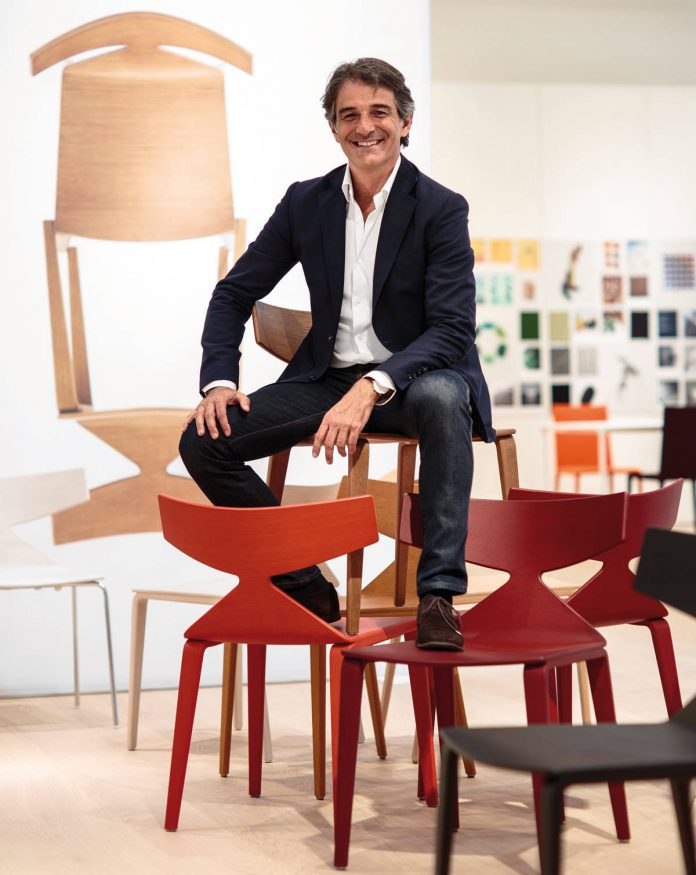The opening of Arper Japan in Tokyo in November 2016 proves Arper’s consistently international vocation…
Arper began its journey as a company focused on foreign market, where it saw more opportunities than in Italy, and it’s still very imbalanced with 94% of sales abroad compared to 6% local. Italy nonetheless remains an important market because it offers possibilities for development and is producing very good results, even though the market is already well-covered. Working on exports was a positive intuition and was essential to develop a solid business.
Europe in particular, which is our main market, accounting 75% of sales, followed by North America, where we have a branch with a showroom in New York, a showroom in Chicago and a logistics and production facility in North Carolina, and more recently Asia, where we have just opened a commercial office in Tokyo with a showroom for assisting architectural firms and interior designers.
What do you mean by ‘soft’ when referring to Arper’s approach to the contract sector?
In what is now a highly fragmented market, our contract division is based on an extensive catalog with products specifically designed to guarantee a good basic offer, even though we can customize products and meet the demands of designers.
The evolving approach to work also involves the transformation of work places and tools. Is this a drawback or an opportunity for the sector?
The way we work is changing and work environments are also changing, for example the traditional work station is becoming increasingly less traditional. Thanks to technology people can now work anywhere even in places that were not formerly used for work, such as hotels and airports. Work places and tools need to adapt to this transformation which is definitely an opportunity for the sector, since we have more chances to be creative and to offer our own interpretation of the working environment. However, it is perhaps becoming more difficult to identify the specific and real needs of users.
In this changing world, what innovation, or innovations, best represents you?
Due to our constant desire to combine aesthetics and functionality, including less obvious features, over the last two years we have focused on two products in particular, designed in collaboration with the Lievore Altherr Molina firm. We developed the Parentesit panels, even though they are not part of our core business, to meet a real need in the market for a solution to the problem of sound absorption in the work place. When creating environments, we aimed for visual comfort and aesthetic effect. The system is our interpretation of acoustic panels, decorative elements and functional tools which offers, in addition to sound absorption, the possibility to listen to music via Bluetooth and to integrate lighting, without exposing the technology, so that it plays a secondary role at the service of the working environment.
The Kinesit office chair is closer to our core business. Due to the restrictions of regulations governing the production of office chairs, which cannot be avoided, we tried in this case to conceal the mechanisms, which were incorporated into the seat and backrest to make it more aesthetically pleasing. You can also combine three types of fabric with three different colors to further personalize the chair. The use of these chairs has probably decreased, but they have become more sophisticated. The market response has been positive and we believe that it is the right approach to meeting the needs of the sector and designers.
Were your experience at the Italian Pavilion at the last Venice Biennale and commitment to Emergency further steps to right direction?
I think that a company’s aim is to seek profit within the rules, but it also has a higher calling as an entity operating within society. Without becoming a philanthropic organization, we must and can contribute in some way to improve the world around us in a continual exchange with the social system.







